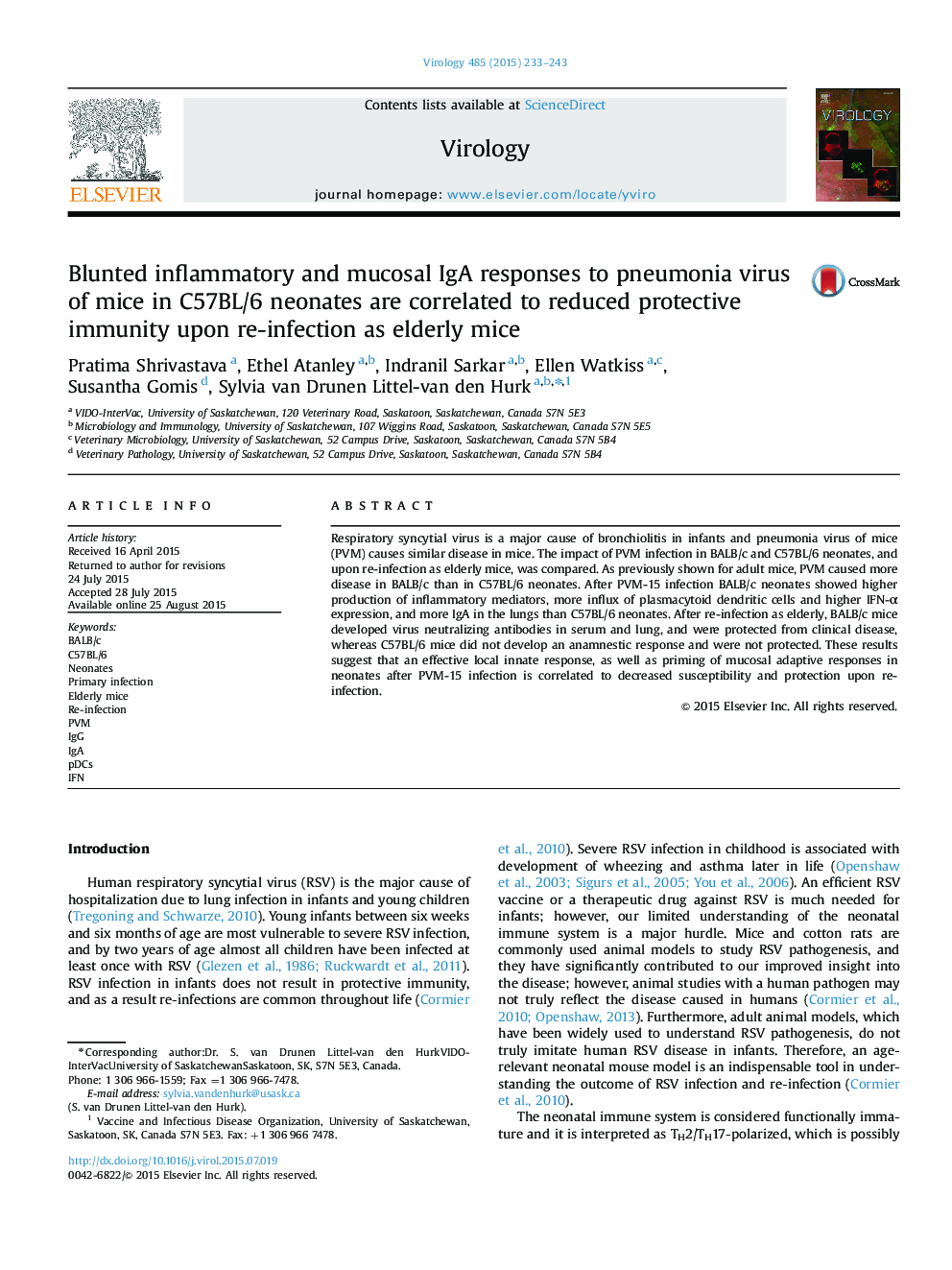| Article ID | Journal | Published Year | Pages | File Type |
|---|---|---|---|---|
| 6138955 | Virology | 2015 | 11 Pages |
â¢PVM causes more severe disease in BALB/c than in C57BL/6 neonates.â¢BALB/c neonates develop a stronger inflammatory response to PVM than C57Bl/6 neonates.â¢BALB/c neonates have more IgA in the lungs than C57BL/6 neonates after PVM infection.â¢After re-infection as elderly, BALB/c but not C57Bl/6 mice are protected from PVM.â¢Re-infected elderly BALB/c mice develop high neutralizing antibodies.
Respiratory syncytial virus is a major cause of bronchiolitis in infants and pneumonia virus of mice (PVM) causes similar disease in mice. The impact of PVM infection in BALB/c and C57BL/6 neonates, and upon re-infection as elderly mice, was compared. As previously shown for adult mice, PVM caused more disease in BALB/c than in C57BL/6 neonates. After PVM-15 infection BALB/c neonates showed higher production of inflammatory mediators, more influx of plasmacytoid dendritic cells and higher IFN-α expression, and more IgA in the lungs than C57BL/6 neonates. After re-infection as elderly, BALB/c mice developed virus neutralizing antibodies in serum and lung, and were protected from clinical disease, whereas C57BL/6 mice did not develop an anamnestic response and were not protected. These results suggest that an effective local innate response, as well as priming of mucosal adaptive responses in neonates after PVM-15 infection is correlated to decreased susceptibility and protection upon re-infection.
